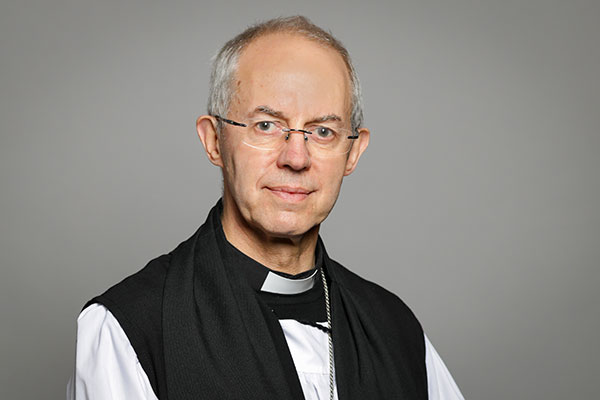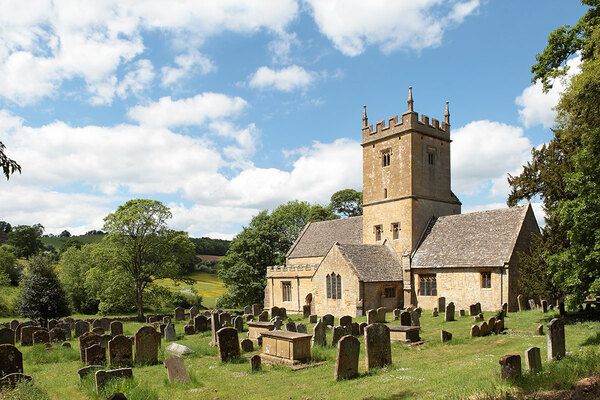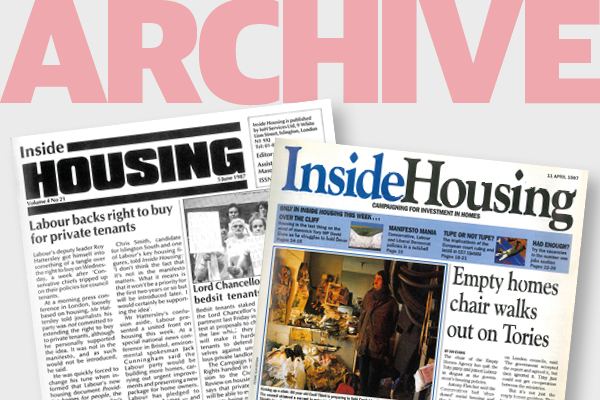You are viewing 1 of your 1 free articles
The benefits of collaboration between the Church and housing associations
Why don’t churches and housing associations work more closely together, and what could they achieve if they did? Charlie Arbuthnot, who leads the Archbishop of Canterbury’s Commission on Housing, Church and Community, and Matthew Corbett, director of the L&Q Foundation, explore the possibilities
Housing associations and churches act as anchor organisations in many of the deprived communities they serve.
So why don’t we do more together? That was the question posed by L&Q and the Archbishop of Canterbury’s Commission on Housing, Church and Community, when they met. The quick answer was, “we do a lot more than we initially thought” (see our case studies below) but we could do a whole lot more.
Our relationship goes back to the very beginning, with many housing associations’ origin stories featuring church involvement, including L&Q’s and lots more, up and down the land.
The pandemic has shown that if we are to solve our multi-faceted housing crisis, we all need to work together – we must each play our part alongside each other.
While we can each do much on our own, if we work collaboratively, we can do so much more.
“The pandemic has energised community action on an unprecedented scale, and churches and housing associations are both seeking to nurture and extend this beyond COVID-19”
The pandemic has brought into sharp relief just how shared our concerns are, with both housing associations and churches focusing on strengthening community resilience and alleviating the hardships faced by some of the most vulnerable in our society.
The past nine months have shown just how fragile, and yet robust, some of our communities are. In many places the traditional services and actors have departed, so churches and housing associations, as ever present, are left attempting to fill the void, and this will continue.
The pandemic has energised community action on an unprecedented scale, and churches and housing associations are both seeking to nurture and extend this beyond COVID-19, because it is in the long-term interest of creating sustainable communities.
Stewardship is the responsible management of resources for today and generations to come. With the emergence of stewardship as a guiding principle in planning reform, we are seeing a convergence of social and physical objectives, which makes greater collaboration between churches and housing associations more compelling than ever.
Housing associations and churches are able to take a long-term, patient view to creating value in their communities, because it is in their mutual interest, and those of their residents and parishes, to create it.
Stephen Timms, Labour MP for East Ham, through the All-Party Parliamentary Group (APPG) on Faith and Society, has set out an exciting vision of how local authorities and faith groups can work together.
He has challenged each party to connect with the other and has given them a framework for doing so well (the Faith Covenant). This article asks the same questions and offers the same challenge for churches and housing associations.
First we will look at the benefits of collaboration, then we will review the constraints (perceived or otherwise) and last we will flag a way forward.
Many churches have a vision for neighbourhood transformation and run a wide range of high-quality programmes, for the benefit of the communities in which they operate. While church schools and food banks will inevitably come to mind, other examples would be: ex-offender mentoring, debt counselling, mediation services, prison chaplaincies, single parenting support, youth clubs, home-work clubs, and support events for older people.
Equally, many housing associations run programmes for the benefit of their communities and residents.
Building the right working relationship with appropriate churches can accelerate the aims of housing associations and vice versa.
By way of example, could housing associations earmark homes for ex-offenders and churches offer to mentor them? Or could housing associations lease homes on a tough estate to a church, which committed to a certain number of hours of free community outreach?
So, what are the perceived constraints and can they be overcome?
A Christian perspective
The Archbishop’s Commission on Housing, Church and Community has reviewed the Biblical narrative on housing, has listened to those most directly affected by the housing crisis and has sought the views of a wide range of housing practitioners. It has then set out five core values, which it believes set a plumb line for what ‘good’ should look like in the housing world and has found these welcomed by those of any faith or none. These are that housing should be sustainable, safe, stable, sociable and satisfying.
Looking more widely, a recent report commissioned by the National Churches Trust concluded that the financial value of the services and support that churches provide, and the health and well-being they create for their communities, equates to £12.4bn a year.
We are therefore confident that the missions of the church and the housing association sector can be fully aligned.
Equalities legislation
Some major housing associations have expressed the concern that, by working with churches, they will be in breach of the equalities legislation or in breach of regulation. As the quotes above suggest, this need not be the case at all, but we are grateful to Jennie Gubbins and Ian Davis from Trowers & Hamlins for further clarifying this.
Do churches and housing associations understand each other?
Some churches feel ill-equipped to engage with the professionalism of housing associations and some housing associations may be concerned about whether churches are adequately resourced. We need to get to know each other and find a way to work together.
We have asked the APPG on Faith and Society to consider expanding their draft Faith Covenant so that it includes housing associations. If churches and housing associations both signed up to this type of covenant, it would enable relationships to develop well.
The commission is addressing the resourcing issue for churches and, when it reports at the end of February, it will provide significant ‘how to’ guides to enable churches to engage with housing associations and other stakeholders.
A way forward
Justin Welby, Archbishop of Canterbury, says: “I hope very much that one outcome of the Housing, Church and Community Commission will be a deepened working relationship between housing associations and churches. If we bring our combined skills and resources to bear, we can make a significant difference in our communities.”

Inside Housing will be facilitating a virtual round table, jointly hosted by the Archbishop’s commission and L&Q. At that round table, we will explore routes for good working relationships between churches and housing associations and aim to develop a covenant/compact similar to that proposed by the APPG for local authorities and faith groups.
But in the meantime, here are some case studies that demonstrate good collaboration.
Case study: Limelight
“Not another one” was the reaction of the Parochial Church Council (PCC) of St Bride’s, Trafford, when they found out that they may have to embark on building a new church.
Just a couple of decades before, their Victorian building had been condemned, and they had to scrape together funds for a new building. Trafford Housing Trust (THT) had plans for their land, and offered to build them another new church.
This time would be different, though. The church would not have to manage the development alone. It also would not cost them, as their new building would be provided free of charge in exchange for their land. Crucially, this time, the church, the housing association and the wider community would all benefit.
The plan would not have worked without the church moving to make way for the changed layout of the new development, with the new church building on the right and THT’s Limelight centre – 81 extra-care apartments for over-55s and a new, expanded community centre – on the left.
The idea was to give a ‘heart’ to Old Trafford. Previously, it had had no real centre, and no cafes. Now, with a library, a cafe, and five businesses in one building, people bump into one another, and find out about community events.
When THT announced that it had funding to build a new centre, it worked with the community to address their concerns. THT found that health and well-being were major problems in the area, because the cost of getting to the nearest health facilities was prohibitive. Because of this, the new centre is home to a large GP surgery, a pharmacy, an optician, a hairdresser and a nursery.
St Bride’s has also done very well out of it. Its old premises were awkward, with church activities held in a rickety three-storey Victorian manse. While its new building provides equivalent facilities, it meets modern standards, including a lift and an upgraded kitchen, all within one building.
Although there have been compromises such as a smaller church garden, the process has allowed St Bride’s to design the space to suit its needs. The continued relationship with THT also helps – Limelight now hosts some church activities.
This development shows that collaboration between churches and housing associations can bring great benefit to our communities and achieve a win-win. We suggest that it is time for churches and housing associations to be more proactive in building these relationships.
Case study: Build London Partnership
The Diocese of Chelmsford (DoC) has been working with L&Q’s Build London Partnership since 2019. As many smaller housing associations and community-led organisations are unable to develop affordable homes on their own, L&Q formed a unique partnership with the Greater London Authority in 2018 to support them.
L&Q uses its expertise to unlock small sites across London, developing the build capacity of its partners along the way. With L&Q’s support, the DoC is exploring the possibilities of initially developing three sites as a pilot in Newham.
Case Study: Lewington food bank
When we made thousands of welfare calls at the start of the pandemic we found that lots of people were struggling with getting enough food. In our Lewington Community Centre, with the support of local church St Katherine with St Bartholomew, we quickly collaborated to establish a new food bank staffed by a mixture of church volunteers and L&Q staff volunteers, which included chief executive David Montague.
This collaborative effort has provided thousands of food parcels over the past nine months and opened over Christmas distributing 266 food parcels and activity packs for children.
It is now a vital local resource to a hard-pressed community and an example of how churches and housing associations can respond quickly on the ground as local circumstances change.
Charlie Arbuthnot, chair, Commission on Housing, Church and Community; and Matthew Corbett, director, L&Q Foundation
Sign up for our daily newsletter
Already have an account? Click here to manage your newsletters













